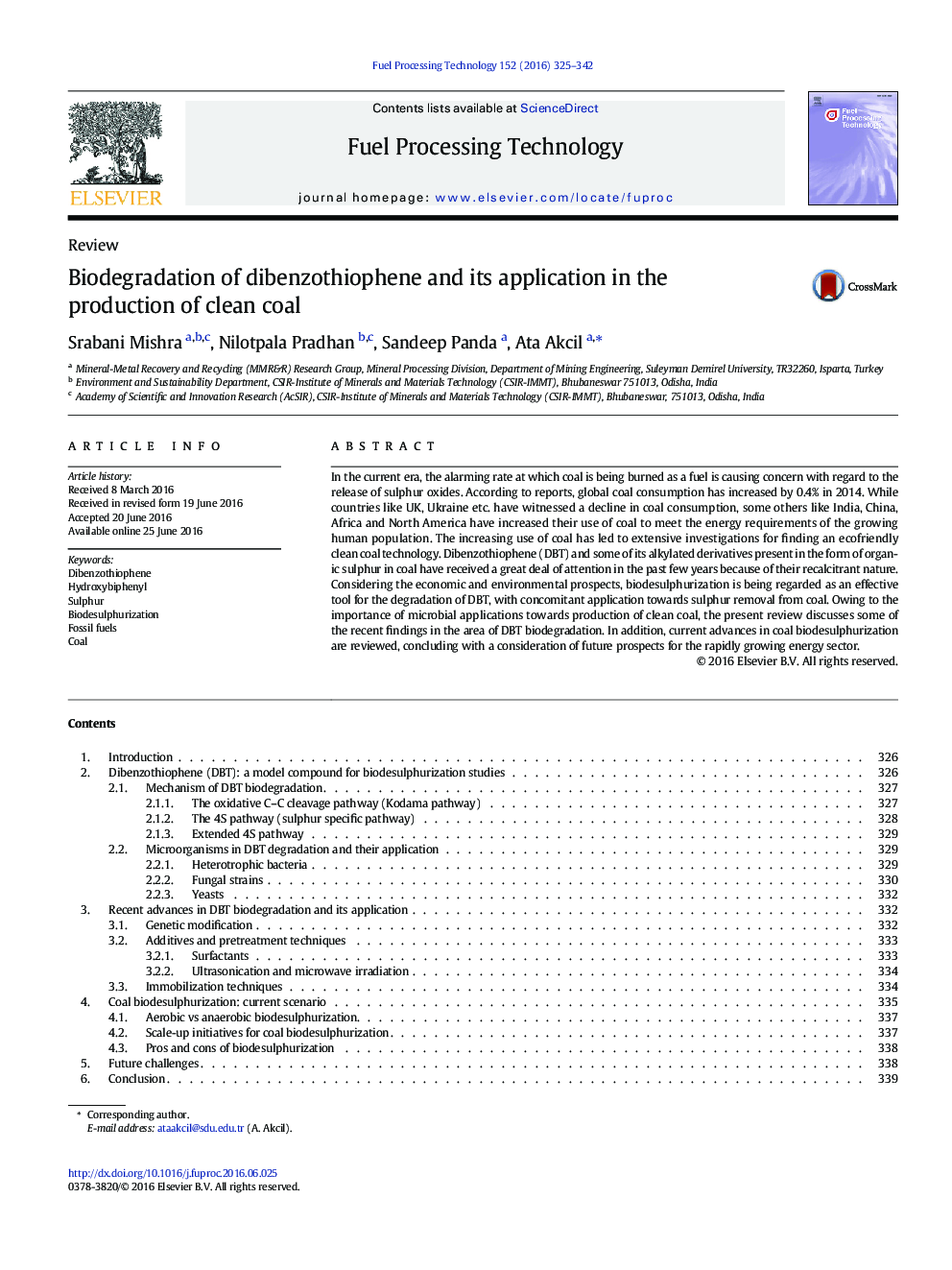| Article ID | Journal | Published Year | Pages | File Type |
|---|---|---|---|---|
| 209095 | Fuel Processing Technology | 2016 | 18 Pages |
•Microbial Dibenzothiophene degradation for applicability in coal desulphurization.•Current advances on Dibenzothiophene biodegradation are discussed.•Discusses current techniques employed for enhancing rate of biodesulphurization.•Current scenario of coal biodesulphurization is presented.•Scale-up of coal biodesulphurization is discussed with future potentials.
In the current era, the alarming rate at which coal is being burned as a fuel is causing concern with regard to the release of sulphur oxides. According to reports, global coal consumption has increased by 0.4% in 2014. While countries like UK, Ukraine etc. have witnessed a decline in coal consumption, some others like India, China, Africa and North America have increased their use of coal to meet the energy requirements of the growing human population. The increasing use of coal has led to extensive investigations for finding an ecofriendly clean coal technology. Dibenzothiophene (DBT) and some of its alkylated derivatives present in the form of organic sulphur in coal have received a great deal of attention in the past few years because of their recalcitrant nature. Considering the economic and environmental prospects, biodesulphurization is being regarded as an effective tool for the degradation of DBT, with concomitant application towards sulphur removal from coal. Owing to the importance of microbial applications towards production of clean coal, the present review discusses some of the recent findings in the area of DBT biodegradation. In addition, current advances in coal biodesulphurization are reviewed, concluding with a consideration of future prospects for the rapidly growing energy sector.
